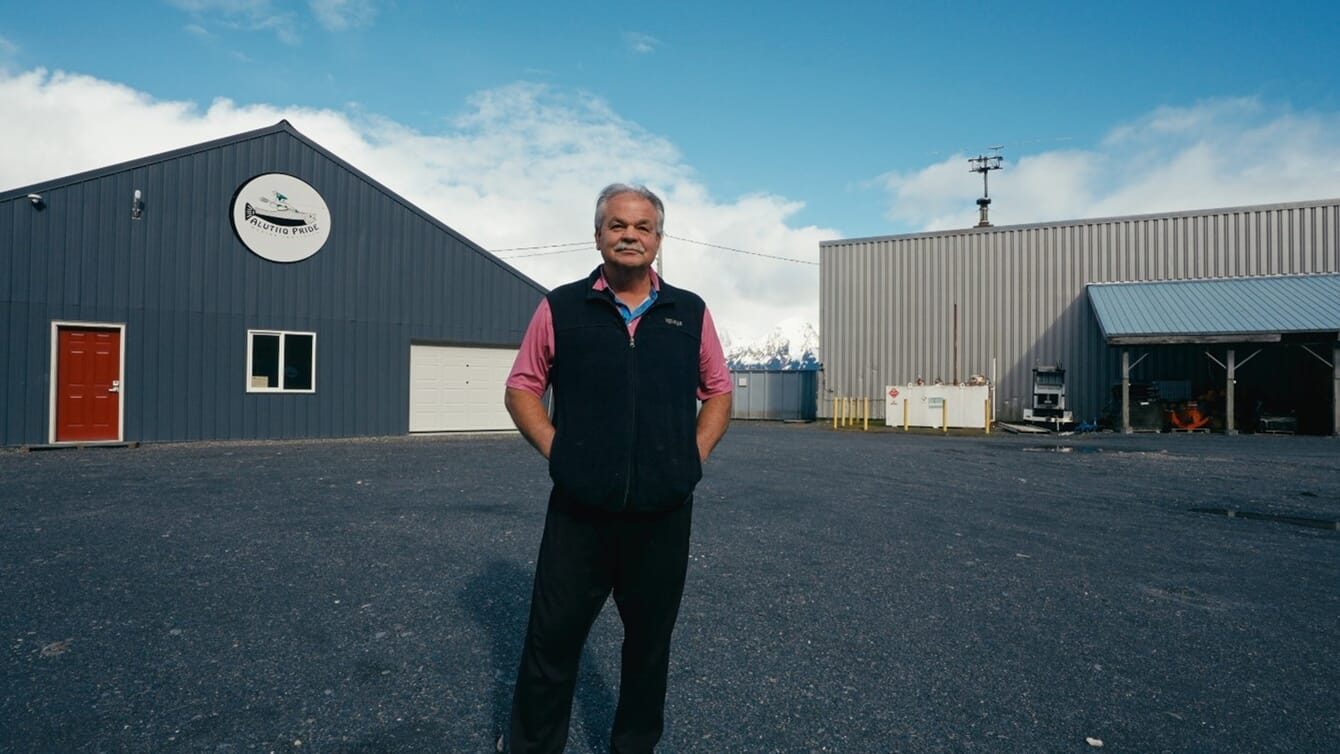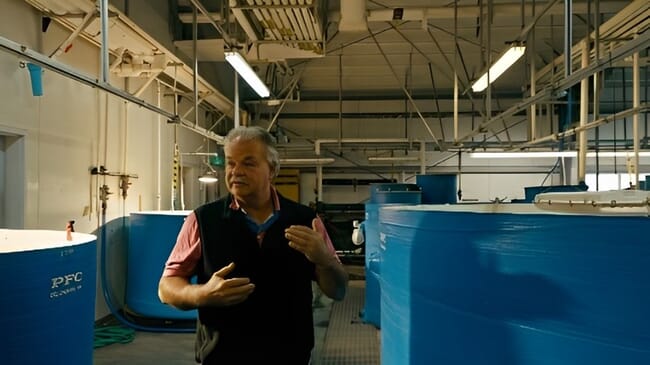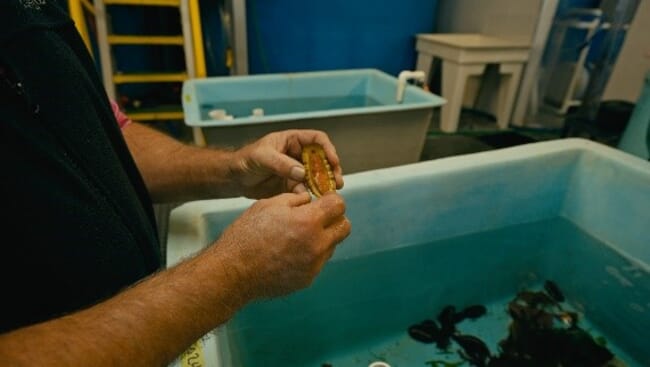
© The Fish Site/Hatch
Alaska is simply enormous: larger than the US states of Texas, California and Montana combined. Blessed with over 77,000 square kilometres of shoreline, the ‘last frontier’ might soon become a mariculture powerhouse, matching the state’s formidable fisheries output, according to Jeff Hetrick, director of the Alutiiq Pride Marine Institute, a tribally managed marine research facility in Seward, Southeast Alaska.
The institute is operated by the Chugach Regional Resources Commission, an intertribal consortium of seven native villages in the Prince William Sound and Lower Cook Inlet region. The Alutiiq people have inhabited the region for thousands of years and are still skilled hunters and fishers.
“We focus a lot on food security for our native communities – particularly the restoration of wild shellfish populations along our coasts – but we study everything from ocean acidification to harmful algal blooms. Some of our most important initiatives is looking for up-and-coming candidates for mariculture,” Hetrick reflects.
Built in 1988, the institute hatchery has grown oysters, abalone, geoduck clams, littleneck clams, butter clams, cockles, purple-hinged rock scallops, sea cucumber, red king crab, blue king crab, even some fish like halibut and herring.
“These species can take anywhere from two to 10 years to raise to maturity, so we’re trying to find ways to shorten grow-out periods and improve sizes, so they can be economically-viable for farming or ranching. For mariculture, we’re working pretty hard to figure out what the best opportunities are for Alaska,” Hetrick explains.
Aside from ranching salmon, Alaska’s best culture options are currently oyster and kelp.
The market for oyster is just insatiable, according to Hetrick.
“The oyster mariculture industry is getting top dollar. Restaurants call us and ask, where can we get some oysters? Can we get more oysters? Alaskan oyster farmers currently can’t meet demand, so there’s a huge opportunity for operators to fill this gap,” he observes.
Oysters have long been the keystone of Alaskan mariculture. The latest report from the National Oceanic and Atmospheric Administration shows that some two million adult oysters were sold in Alaska in 2022, with a further five million juvenile spat sold to other farms locally.
Alutiiq Pride Marine Institute has developed nursery systems and grow-out programmes for oysters, culturing various types of algae to feed juvenile shellfish in aerated, circular vats. They aren’t just for seafood either: in Maine, oyster farmers offer visitors special oyster farm tours (offering fresh oysters afterwards, of course). Done right, ecotourism pays dividends not just in greenbacks, but in enhancing the image and community standing of mariculture operators.

Jeff takes The Fish Site through a quick tour of the Alutiiq Pride Marine Institute, which grows various types of shellfish including oysters, clams and cockles. The vats are temperature-controlled, with oysters and shellfish kept relatively warm and king crabs and kelp kept cool © The Fish Site/Hatch
Hetrick is hopeful that seaweed might offer an additional option for growers.
“There's recently been a lot of interest in kelp. We're hoping that the kelp mariculture industry offers good economic and livelihood opportunities for our local communities. Traditional communities have many uses for kelp, from food to fertiliser. We're trying to ‘reverse-engineer’ kelp processing and we're told that the end product lots of people want is kelp powder, a biopharmaceutical product,” he notes.
However, Hetrick adds that it’s not yet cost-effective to ship unprocessed kelp to make kelp powder.
“We're working with companies to make the powder outside Alaska. Here, we process kelp into a slurry that ships out nicely. We’ll see how it goes,” he explains.
As always, the institute is looking for unique native species for niche products.
“We have kelp species here that don’t grow anywhere else. Maybe there’s something unique about their taste or biochemical properties so we don’t always have to compete in a commodity market,” Hetrick observes.
Another interesting Alaskan specialty being pilot-tested is the ‘bidarkis’ or black katy chiton (Katharina tunicata), a meaty mollusc that has been harvested by Alaskan tribes for millennia, although this is likely to be cultured for subsistence, rather than commercial purposes. “I’m also a big believer in cockles,” shares Hetrick. “I think cockles offer a huge opportunity, as they get pretty good reception in the marketplace.”

Among the unique animals raised is the ‘Bidarkis’ – a type of meaty chitin prized by native peoples. “They’re pretty cool and we’re just learning to grow them,” shares Jeff. “Since 1988, our institute has grown abalone, sea cucumbers and squid. But the real growth opportunity for Alaska is oysters and kelp.” © The Fish Site/Hatch
Alaskan mariculture: the way forward
“I've often wondered why to date no big corporations, no big investors have come in to put up large farms in Alaska,” muses Hetrick.
The state is undoubtedly a unique environment for mariculture – temperate, underpopulated and relatively isolated, which has its drawbacks, as well as its advantages.
“Most of the communities we work with are only accessible by air and boat, but kelp and oyster mariculture here are not much different from other industries in Alaska: high transportation, labour and energy costs. Farmers must deal with these to succeed,” Hetrick notes.
A major problem is undercapitalisation, a lack of capital for operations. With rising demand for oysters, kelp and unique seafood products like cockles, however, investors might want to look into funding growth in these industries and riding the benefits later on.
“One of the good things about Alaska is that the regulatory environment is quite favourable. We also have a vast, largely uninhabited coastline, with almost no user conflicts. You can fly out here for days and never find an oyster farm unless you know exactly where you’re looking. Lastly, we have Anchorage, which used to be the second-largest freight port on the planet. It can be a hub to the Far East, where premium seafood is always in demand. There’s the possibility of supplying a global market from up here.”
Hetrick thinks there’s also an opportunity for capture fishers to augment their incomes through mariculture, particularly since wild capture fisheries are becoming more and more unstable, rocked by the recent Covid-19 pandemic, the closure of Bering Sea crab fisheries, the crash of several salmon runs and other industry trials.
For one, fishing outfits already have the skills, knowhow and equipment like boats and can easily experiment with mariculture, particularly during the off-season.
“Some fishers have kind of tiptoed into it, but it’s a big commitment to stop fishing entirely and transition to mariculture, especially for some of our native communities which have been hunter-gatherers for generations. Still, we have around 20 entities already making a good living from mariculture,” Hetrick observes.
With enough investment and some smart planning, he thinks the future of Alaskan mariculture is rock-solid.
“We have everything in place to succeed: a good regulatory environment, public support and an insatiable market for quality Alaskan seafood. Plus, Alaskans are really stubborn,” he concludes.
*This article is part of a project commissioned by the SEC to highlight the region's mariculture sector. To learn more about the sector visit https://alaska.seaweedinsights...







